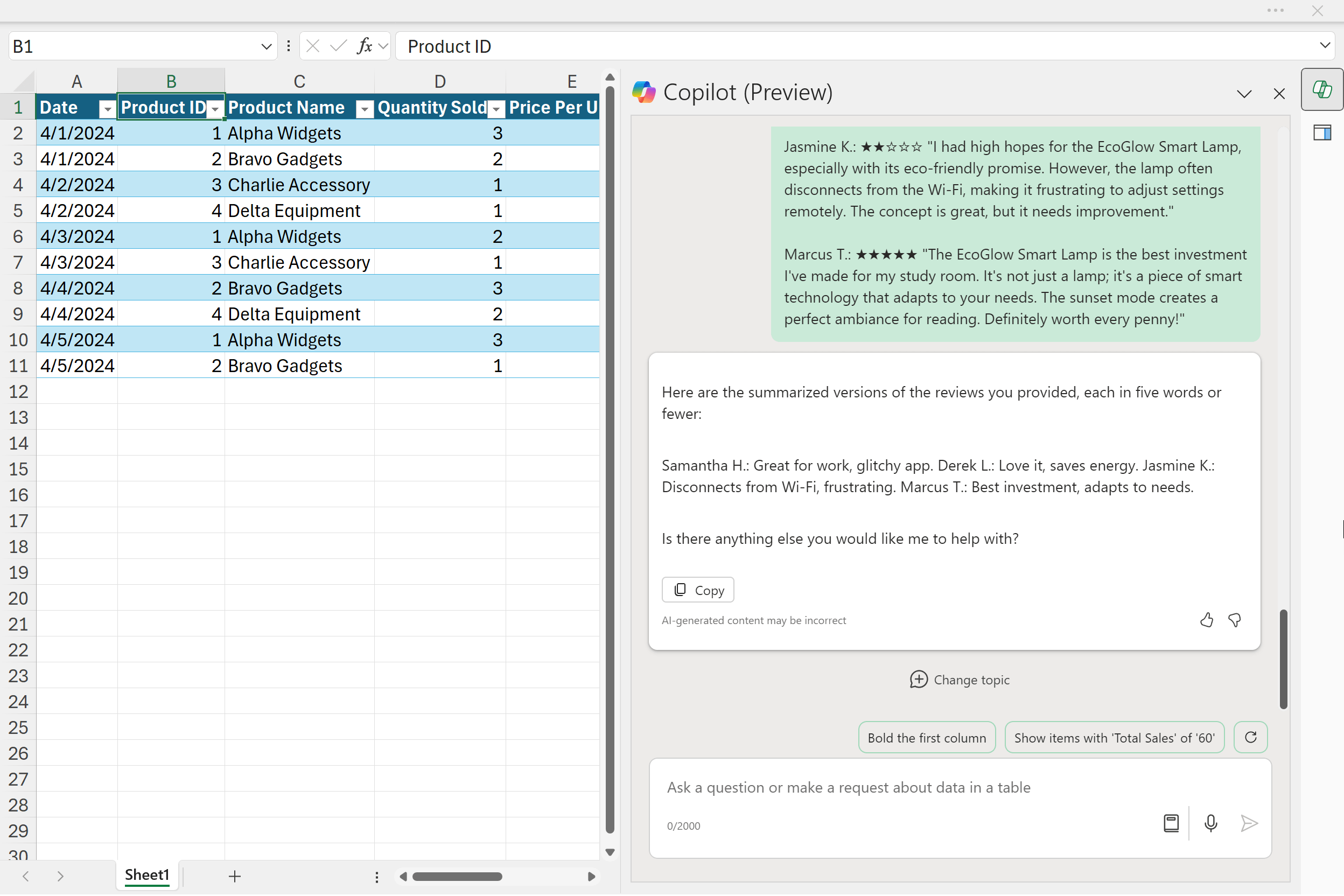Copilot in Excel can help with a variety of everyday tasks for working with your data, such as adding conditional formatting or creating basic calculated columns. But did you know that you can also use Copilot in Excel for some non-Excel tasks? Let’s explore how this works and see how it could actually help in your day-to-day activities as an analyst. To follow along, you can download the exercise here, or open up any dataset in Copilot in Excel:
Excel for Copilot vs ChatGPT
Let’s take a moment to understand why Copilot in Excel is knowledgeable about topics beyond Excel itself. This capability stems from the algorithms used to power Copilot, which were developed by OpenAI using the Generative Pre-trained Transformer (GPT) models—the same models that power ChatGPT.
These models were trained on a vast corpus of text data, encompassing much more than just Excel-specific content. In theory, and generally speaking, you can use Copilot in Excel for the same wide-ranging tasks that you might use ChatGPT for. The advantage here is that because Copilot in Excel includes security procedures, the data you share is safe outside your organization. The downside, however, is that Copilot in Excel was not intended to be a general-purpose generative AI tool.
If you are looking for such a tool, consider using Microsoft Copilot. But given that many analysts spend their days in Excel, and switching between programs to ask a quick question can be cumbersome, let’s see how we can manage some basic tasks with Copilot in Excel.
Pulling general knowledge facts
First, you can use Copilot in Excel for help with general knowledge and fact-finding. Please keep in mind that you need to load your data into Excel and point Copilot to a specific table to get started. In fact, Copilot will even guide you to prompt questions about the data in the table.
However, you don’t have to strictly adhere to these guidelines. For instance, suppose we suspect that recent sales were influenced by the weather. While Copilot, like many other tools based on LLMs, may not have access to very recent data, such as yesterday’s high temperature in Seattle, it can provide insights into general trends for this time of year in Seattle:

Keep in mind that if you are dealing with geographic entities, companies, or currency rates, much, but not all, of this information might be available through linked data types.
For another example, perhaps we are interested in understanding the overall scope of the retail hardware market. We might ask what the overall size of the market is, for example. Again, while Copilot is quite helpful here in providing us with some basic facts, it is unable to link directly to a source or URL (always helpful when validating AI-generated research claims!).

Working with text
Next, we can use Copilot in Excel to help us with some general text-related tasks. For example, perhaps you are dashing off an email to someone about your status on a project and would like it proofread before sending. Sure, you could do this in Outlook, but again, maybe you want to be able to keep Excel open as you multitask.

In this example, we can generate concise review summaries that may be useful when compiling reports, either within or outside of Excel:


Again, while not the most powreful and user friendly interface you could certainly gt hlp putting togethr outlines, agendas, summaries or othre txt basd artifacts for your day to day work.
Getting help with technical questions (including Excel!)
Last but not least, you can certainly seek assistance from Copilot for a variety of technical questions. For example, let’s say you were exploring the new Python in Excel capabilities and were interested in working with outliers:

Notice that in the example provided, I tried to be as specific as possible by naming the dataset and the dependent variable of interest, among other details.
This ability to receive help with technical questions can be particularly useful when you need assistance, ironically, with Excel. Currently, Copilot in Excel is primarily designed to work with one table at a time in basic Excel setups. If you are interested in generating Power Query code, DAX measures, or even writing an XLOOKUP() between two tables, Copilot might not be the best tool for the job.
However, you can use Copilot, for instance, to create the code for you to use on your own:

Once again, there are many places to seek assistance with technical coding questions, and while this might not be the most conventional platform, it makes practical sense to utilize generative AI from your primary workspace, which for many analysts is Excel.
Do you have any questions about Copilot in Excel, or how to use it for tasks outside of Excel specifically? Please let me know in the comments. You can also explore my course on LinkedIn Learning for an introduction to Copilot for Excel.

Leave a Reply